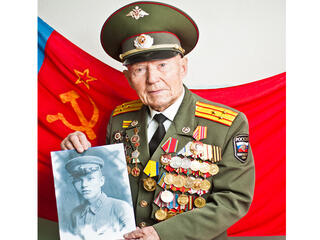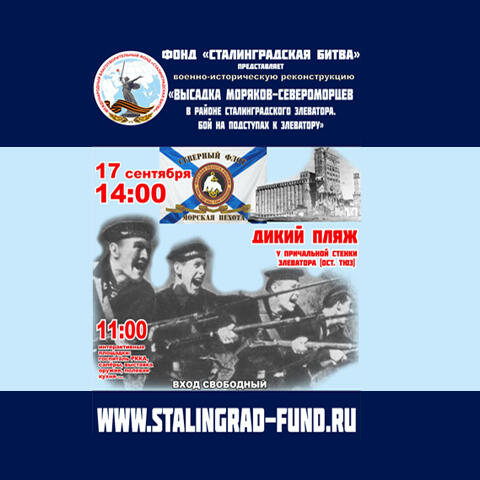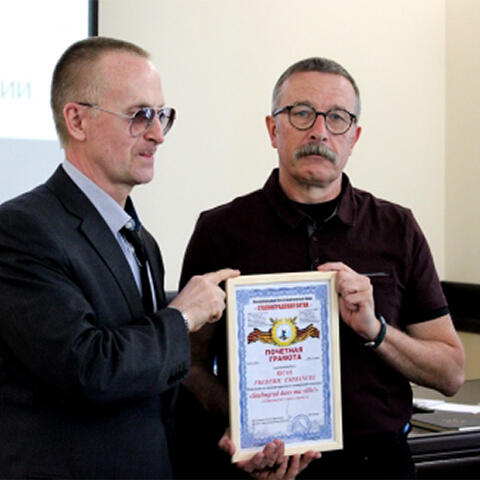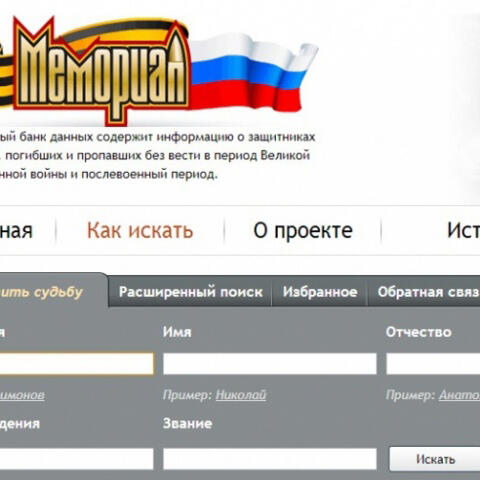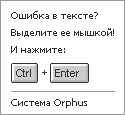The search algorithm of dead and missing in the great Patriotic war.5 steps of search.
17 / Июнь / 2017 1524
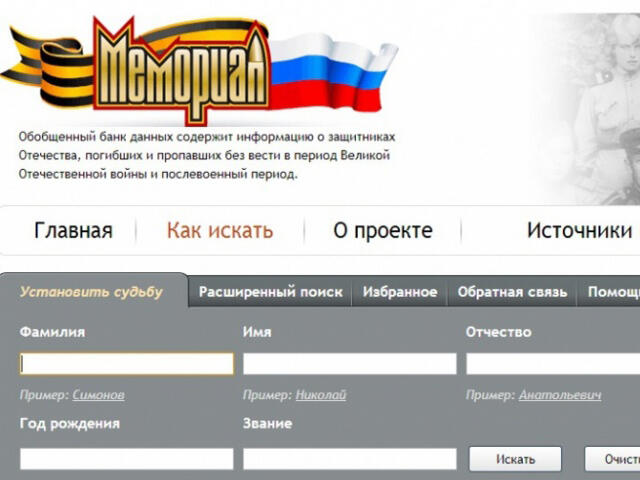
If you do not see social share buttons disable ad blocking in your browser, our site does not contain ads!
About where and how to look for information about the grave of a soldier of the great Patriotic war, "Thomas" said Dmitry Aleksandrovich Belov
You tell me: "Why look for?
Long gone, those who killed here,
Gone and those that could wait
And they all long since forgotten..."
Song from search engines
Almost every family in our country has relatives missing during the great Patriotic war. Some scattered information is stored in the family who have preserved photos. But when you see the name of a native person in a report to the database "memorial", for example, somehow more clearly represent the train under fire, the trenches ... And it seems that if you know anything at all, your soldiers will not be so alone in his unmarked grave. And I hope that I returned soldiers will be left without prayer.
About where and how to look for information about the grave of a soldier of the great Patriotic War, "Thomas" said Dmitry Aleksandrovich Belov, candidate of historical Sciences, Director of the research center of regional history, Volgograd state Academy of postgraduate education, Vice-President of the International charitable Foundation "battle of Stalingrad".
Step 1. Where to start
The fastest way to find his cousin, who died in the Great Patriotic War — is a generalized data Bank "memorial", the base of the Central archive of the Ministry of defense (TSAMO):
To do this:
- Go to the website of the Central archive of the Ministry of Defence of the Russian Federation, where e is the most complete in our country database of those killed in world war II: www.obd-memorial.ru
- Fill in the fields "last Name", "Name", "Patronymic", "Year of birth" of his deceased relatives:

- Ideally, the result of a few lines with a more or less complete information and continue to study the materials in the direction of specifying the exact place of burial.
- In the first or last name, or middle name change letters, selecting them in such a way as if they were written by illiterate people, or the original document was poorly read, and there are alternative ways of reading. And you may run into additional documents from the archive database.
Material on the subject
At this stage of the search to begin with, you surname, name, patronymic, year of birth, preferably the title. If it is Ivanov Ivan Ivanovich, of course, will be more difficult. We must persevere to ensure that this is the man, going to need details – name of the wife, mother, the village's name, the city where he was drafted, place of birth (in accordance with the administrative territorial division of the USSR in the prewar years – approx. ed.).You should pay special attention to the fourth paragraph. In the database there are indeed stupid spelling mistakes. My great-grandfather's name was Andrey Kirillovich. I wrote "K." like a normal person with two years, and then I thought, what not all know how K. written...
Scored K. with one "l" and immediately found a place of burial. Also Filippovich – may be Filippovich, and one "p", and so on. Such moments should be considered.
Ideally, your search should be a paper on the burial site of a relative and information, in what military unit (army, division or regiment) he fought.
If no information, it is hoped that the search teams that are engaged in the search and burial of remains of soldiers will find something. If the search engines could find someone, they turn to the military, looking for relatives themselves.
But you can continue the search yourself. In this case, it is necessary to collect the maximum possible amount of information to start a qualitatively new phase of the search.
We can help with?
Step 2. Collection of additional information
Do you have kept the letters?
The most important thing in the letter number field postal station (PPS) on the stamp of the envelope. It is possible to set the number of division, regiment, etc.
On the website http://soldat.ru/spravka there is need reference PPP.
The Dating of these letters has a value and, perhaps, of the letters will be clear, at least to some military operation he participated in.
Was he an officer? If he finished school?
Upon receiving the rank of second Lieutenant automatically school starts. In this biography, matriculation, assessment on military subjects.
If not an officer, if the person is not killed, but died after the war, relatives could theoretically go in the military for information. But in the military destroy the case five years after the person's death. Because the military has no money, then time can be extended to 7-8 years. There is a moment of luck. I managed to find the personal Affairs of people who are already the idea had to be destroyed, but due to the fact that the person held the position of special commandant of the city was, for example, decided not to destroy it, and it was overlooked in the military, lay 8-10 years instead of 20 years.
If he is an officer, the documents from the Central archive of the Ministry of defense (TSAMO) is not going anywhere. There will be card officer, personal business, his name in the lists of the school.
Was Lee injured?
Material on the subject
During the war the hospitals had the card for each wounded, where he painted in the hospital and when was treatment, much injured, from which he division. Look for this card in the Branch of TSAMO Voenno-of medical documents in St. Petersburg.Thus it is possible to know the time and place of injury, at the hospital you can try to find out what division and regiment he served in this day, to present the chronology of the events, linking the fate of a relative with events on a specific sector of the front.
The answer, however, after about six months. Definitely need to write e-mail, and on paper, and send the envelope registered mail. Better yet, by registered letter with notification that their disciplinarum.
The request must specify the name of the relative, year and place of birth, how the district recruited, No. military where military service, military rank, date of last letters, any information that You have and are able to help employees archive and search the information You need.
Address: Branch of the Central archive of the Ministry of defence of the Russian Federation (military-medical documents, St. Petersburg) 191180 Saint-Petersburg, Lazaretny pereulok, 2. Each of the archive: +7 (812) 315-73-28.
Was released from captivity and has a filtration camp of the NKVD?
In this case, you need to contact the archives of the FSB at the last place of residence of the family member (in the regional Department of the FSB). Surely it is about his stay in captivity are kept there. Otherwise, you need to write a request to the Central archive of the FSB. Address: 101000, Moscow, Bolshaya Lubyanka, 2.
Is there a photo?
A photo can help to set dates, determine the kind of troops — division or engineer, signal corps, tank. If there are signs of differences in the buttonholes, the photo dates from 41-42 year and sometimes 50 to 50 % — 43 year. If he was in uniform, so it's definitely 44-45 year. So you can understand that if he was in uniform, in 44 or 45 he was still alive.
By their uniforms and insignia you can see the officer or not.
All these details will help to make a request to CAMD so that chances of getting new information was more.
Step 3. Where else to look on the Internet
Material on the subject

Missing. The base of "the Feat of the people"
The base of "the Feat of the people" became a full-fledged tool able to provide considerable assistance in the direction of further search. It can be seen as an important addition to the database "memorial", the instruction which we wrote earlier.
Military literature
Powerful resource: a lot of documents on military issues, memoirs, collections. If you know the number of divisions, the area of fighting, then you can at least in General terms, to find a description.
Database "exploit people"
http://www.podvignaroda.mil.ru
The project, CAMD.
This database where there is information about the soldiers who were awarded medals. Read more about how to search in database "exploit people"
Soldiers.ru
On this resource there are several data bases on hospitals. Dial the number of the hospital, hit Enter and see what division he served.
And yet a lot of reference books on combat arms, the straps of the weapon.
But the most valuable Soldiers.ru forum http://soldat.ru/forum
If it to register, you can get a consultation absolutely unfamiliar to historians, researchers, all who are interested in the search of the military commissariats.
To register at the top of this site (see the picture above the bottom right corner) click "Register". Next you need to fill in the registration form.
Then create a theme (better to call it short, e.g. "no. __- th infantry division. Looking for relatives"). Then Your request will be able to read everyone who will visit this site. Do not hesitate! Such unfamiliar and concerned people will be enough. Each will help You the information available. Some will answer, advise, counsel, and others — to recommend the sites to scan the documents You need, excerpts of books, etc.
Other resources
There are many resources that publish interviews with veterans, and biography. But it is worth considering that these sources generally do not represent historical value, neither for the researcher nor for someone who wants to use this material in the search.
If I, for example, for the current work required by the recollections of veterans who fought at Stalingrad tractor plant in any specific date, then I don't get the expected result — at the date and place of these electronic databases are not filtered.
In addition, veterans tell as they personally see it and remember. They may confuse dates, even years. Here the interviewer should listen carefully to know what kind of fighting is going on and correct the information.
Step 4. Write a certified letter-request to the Central archive of the Ministry of Defense (TSAMO)
Central archive of the Ministry of Defence
If nothing happens on electronic databases, you will have to go in TSAMO (Podolsk).
Material on the subject
To visit the Central archives of the pre-application form, identity document, proof of kinship, perhaps, a notarized power of attorney (if you are acting on behalf of a relative of the deceased and come to work in the reading room of the archive).
It is better to specify all the details by phone: 8 (4967) 69-90-05, 8 (4967) 52-76-68
You can also send a request by mail.
In this case you need to send it as registered (!) letter. In the letter you need to attach copies of documents that confirm that You are a relative of the deceased. The request must specify: full name of the deceased, year and place of birth, place of recruitment (i.e. how the military enlistment office called and when), what army or division (if we know or assume) served when missing.
Address: 142100, Moscow region, Podolsk, Kirova street, 74
Wait for the official response from the archive you have at least six months (this may be, including failure to provide information and offer to come to the archives personally — approx. ed.).
And you should be prepared to ensure that information will be enough buying. But some part of it is classified.
Step 5. How else to look for?
You can contact the red cross society. Better site that interests French Red Cross, the Polish... They are in the mail sent an official response. I was sent in Russian: no data available, data that are of interest, not detected.
As for the search on concentration camps, very little information, because the Germans burned almost 100% of their archives. But there are exceptions.
A personal story for each
I started with www.obd-memorial.ruit was the simplest. At that time this database has caused a lot of criticism, it was not complete, just started. But I was lucky.
Material on the subject
I was an employee of the Museum of the battle of Stalingrad and worked on a project with the Germans in Hamburg. We developed the concept of the exhibition "Stalingrad as a place of memory of modern youth of Russia and Germany". And collecting information about others, I asked myself: why I did not get to search their dead relatives? I asked parents, it became clear that our family was missing grandpa on my mother. In the database managed to find the card camp. Photograph of great-grandfather's family have not survived, but the Germans took a picture of him in the camp.It says who he is, where it is not entirely clear what the division, even army, of course, that took him prisoner in may, the 42nd, near Kerch, in the Kerch-Feodosiya operation. He died three months later from starvation in a concentration camp C VIII near the town of żagań, in Poland, then East Germany. And I'm with an accuracy of 50 meters mounted approximately where his grave is. I had to Tinker with the history of this camp, because it had many branches, dying prisoners in one place and bury them in another. But it was all recorded, documented, what is the grave number.In the documents there were some German ciphers, which I could not understand myself, had to seek help from friends in Germany: they rushed to help, suggest. They helped translate the cipher to understand the diagnosis, the cause of death.
Mom found out his great-grandfather in the photo.
History by profession I am a partaker of all the time, get used to it. But after I found the grave of his grandfather, there was a special sense of family history when it fits the General outline of historical events. There was a special interest in films that relate to the operation, which was attended by great-grandfather, search units, which dig in those places. Began you feel the incident.
A few resources where you can go missing in the Great Patriotic War:
The Association "Saxon memorials" in memory of the victims of political terror, Dresden
About the camps for Soviet POWs, located in the territory of the Reich, and helps to obtain information about former Soviet citizens who died during the Second world war in camps and working commands on the territory of the former German Reich.
The international Tracing Service in bad Arolsen in the North of Hessen.
You can submit a request if you know that your relative was captured and could have died in a German concentration camp.
In addition, in the archives of the MSD 2 800 personal belongings of the prisoners, whose owners are known by name. We are talking about personal things that have arrived here for storage, mainly from the concentration camps Neuengamme (2 400) and Dachau (330). However, there are also personal items of people imprisoned in the Gestapo of Hamburg, in the concentration camps Natzweiler and Bergen-Belsen, as well as in the transit camps Amersfoort and Compiegne.
Photographs of monuments with names of fallen soldiers
More information on search technology:
http://www.soldat.ru/doc/search/destiny/2_home.html
http://www.moypolk.ru/ishchu-soldata
-

This site and material for publikation was prepared by:
Kirill Aleksandrovich Esin
SITE SECTIONS
The project "Stalingrad in the history of Great Britain The Project "Thank You Stalingrad" The Project "Stalingrad True" The project "From Stalingrad to Prague" The project "STALINGRAD: 75 years of the Victory"
Constituent document Principal activities Position about the participants
POPULAR MATERIALS
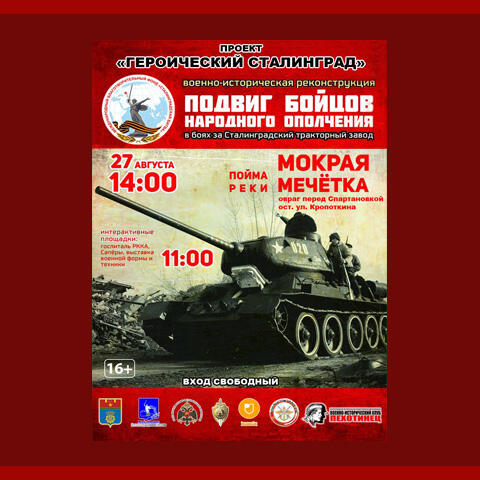
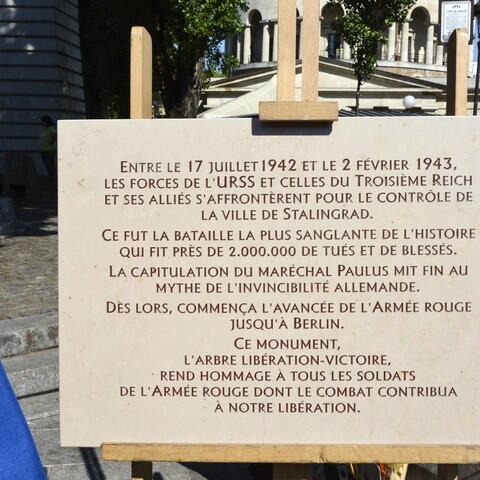
-
phone
+7-961-688-7771
-
e-mail
stalingradfund@mail.ru
-
address
Russia, Volgograd region, Volgograd, Lenin Ave., 2 B ,400066
-
facebook
facebook.com/staligrad-fund
-
VKontakte
vk.com/stalingradfund
INTERNATIONAL CHARITABLE FUND THE STALINGRAD BATTLE




